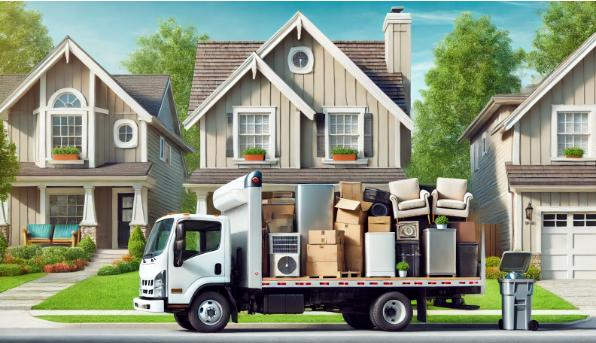
How to Declutter Your Home: A Guide to Efficient Residential Junk Removal
Clutter has a sneaky way of piling up, doesn't it? Whether it’s old furniture, broken appliances, or that collection of outdated magazines, it can quickly overwhelm your space. If you’ve found yourself avoiding certain rooms in your house because of the mess, you’re not alone. Residential junk removal can be the game-changer that helps you reclaim your space. In this guide, we’ll walk you through the process of decluttering, sorting, and disposing of unwanted items in the most efficient and environmentally friendly way.
What Is Residential Junk Removal and Why Is It Important?
Residential junk removal refers to the process of clearing out unwanted or unused items from your home. It’s not just about creating more space but also about reducing stress, increasing the functionality of your home, and even boosting property value.
Why Decluttering Matters:
- Reduces stress: A cluttered space can lead to anxiety and reduce productivity.
- Increases home value: Removing junk makes your home more attractive to potential buyers.
- Improves indoor air quality: Dust and allergens accumulate on unused items, affecting your health.
- Promotes sustainability: Responsible disposal reduces landfill waste and can contribute to recycling efforts.
Step-by-Step Guide to Effective Residential Junk Removal
Step 1: Plan Your Decluttering Project
Before jumping into the process, take some time to plan. This might seem like an extra step, but it can save you hours of frustration.
- Assess the space: Walk through each room and list the areas that need decluttering.
- Set a timeline: Decide whether you want to tackle the project in a single weekend or spread it out over a few days.
- Gather supplies: Have trash bags, boxes, and cleaning supplies ready to go.
Step 2: Sort Items into Categories
To streamline the junk removal process, categorize items into four groups:
- Keep: Items you still use or need.
- Donate: Gently used items that can benefit others.
- Recycle: Electronics, cardboard, and other recyclable materials.
- Trash: Broken, unusable items that can't be donated or recycled.
Step 3: Declutter One Room at a Time
Tackling one room at a time helps prevent burnout. Start with spaces like the garage or attic, where junk tends to accumulate the most.
Pro Tip: Set a timer for each room. Challenge yourself to complete decluttering within that time frame to stay focused.
Step 4: Dispose of Items Responsibly
Not all junk is destined for the landfill. Here’s how to dispose of items properly:
- Donation centers: Goodwill, Habitat for Humanity, and local charities often accept gently used items.
- Recycling facilities: Check local guidelines for recycling electronics, metals, and other materials.
- Professional junk removal services: If you have large items or hazardous waste, consider hiring a service to handle the disposal safely.
Residential Junk Removal Services vs. DIY: Which Is Better?
| Criteria | DIY Approach | Professional Service |
|---|---|---|
| Cost | Minimal, mainly disposal fees | Higher, but includes labor costs |
| Time | Longer, especially for large jobs | Quick and efficient |
| Physical Effort | Requires lifting and transport | Handled by professionals |
| Environmental Impact | Requires knowledge of local disposal laws | Services often recycle and donate |
Tips to Keep Your Home Clutter-Free
- Adopt the one-in, one-out rule: For every new item you bring home, donate or dispose of one old item.
- Schedule regular decluttering sessions: A bi-annual declutter can prevent clutter from getting out of control.
- Invest in storage solutions: Shelves, bins, and organizers can help keep everything in its place.
- Practice mindful shopping: Avoid impulse buys by asking yourself if you really need the item before purchasing.
FAQs on Residential Junk Removal
Q1: What types of items can I donate?
Most donation centers accept gently used furniture, clothing, kitchenware, and electronics in working condition. Check with your local charity for specific guidelines.
Q2: How can I recycle electronics?
Many electronics stores, like Best Buy, offer free recycling services for items such as old phones, laptops, and TVs. Additionally, some cities have dedicated e-waste recycling days.
Q3: Can I throw away hazardous materials like paint or batteries?
No, hazardous materials require special disposal methods. Contact your local waste management facility for guidelines on safely disposing of chemicals, batteries, and old paint cans.
Q4: What are the benefits of hiring a professional junk removal service?
Professional services handle heavy lifting, transport, and disposal, saving you time and effort. They also ensure that items are disposed of or recycled responsibly, helping you stay eco-friendly.
Quick & Reliable
We are available by phone or email
CITIES WE SERVICE
Benton, LA
Minden, LA
SERVICES
All Rights Reserved | LEFTOVERS Junk Hauling & Roll-Off Dumpsters
